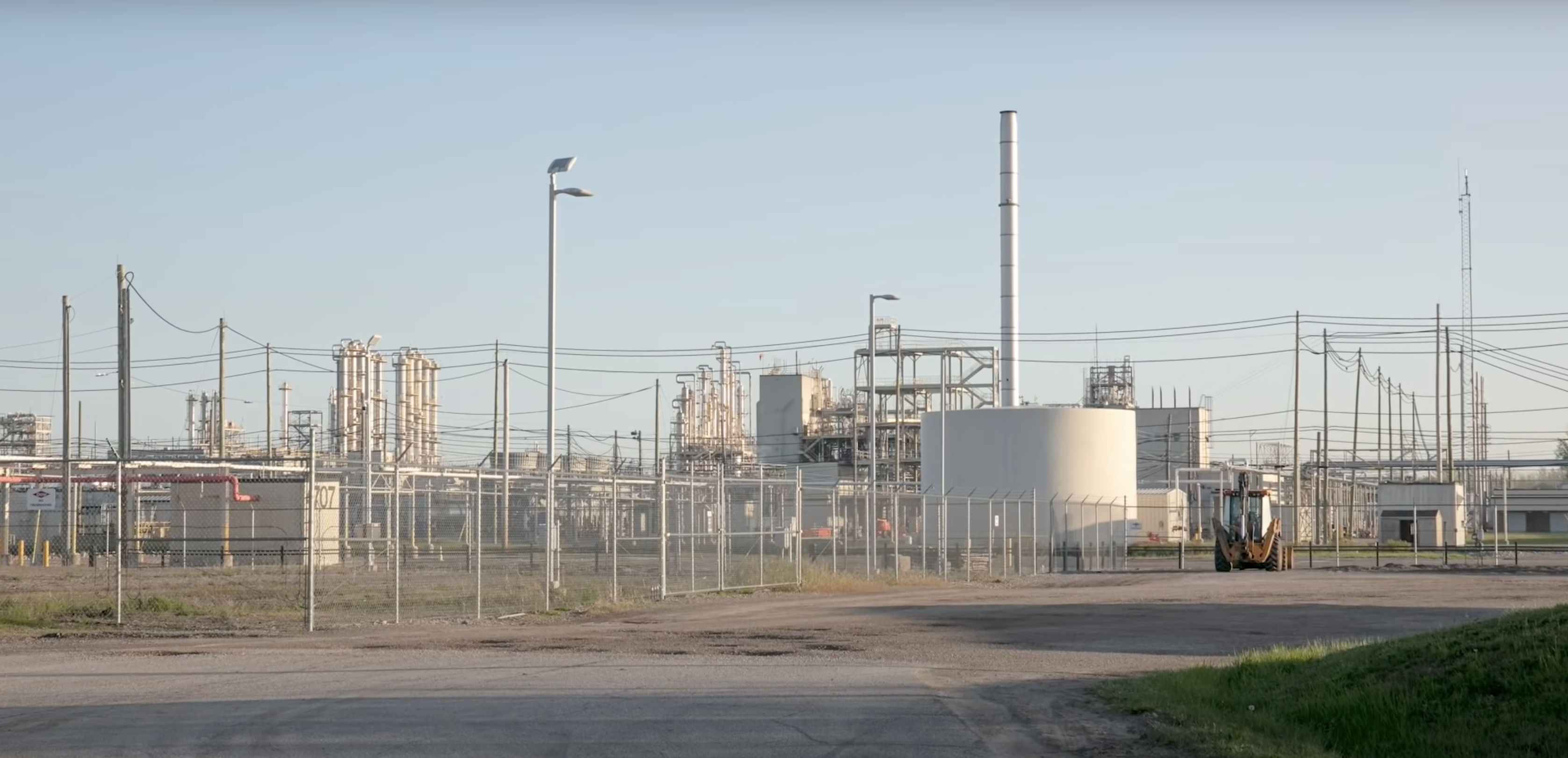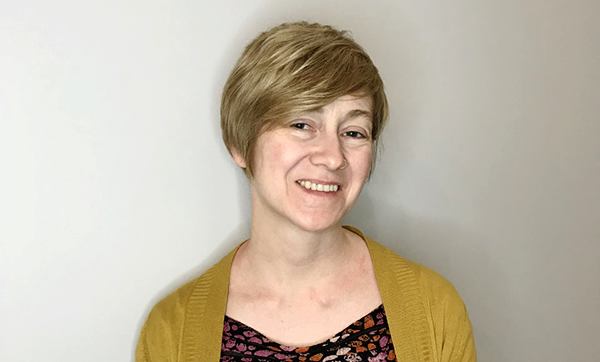Tiffany Skogstrom (SPH’12) Leads Chemical Policy Development, Research at Mass. Office of Technical Assistance.

Tiffany Skogstrom (SPH’12) Leads Chemical Policy Development, Research at Mass. Office of Technical Assistance
In 2017, historic flooding from Hurricane Harvey led to a power outage and subsequent explosion of organic peroxides at an Arkema, Inc. chemical plant in Crosby, Texas. The blast, which occurred when toxic chemicals ignited in a disabled refrigeration system, contaminated the air in the surrounding community and forced the evacuation of 200 nearby residents.

“When people think about climate change, they don’t normally think about toxics, or roofs collapsing over chemicals, or electric outages causing explosions because facilities can’t store chemicals at the right temperature,” says Tiffany Skogstrom (SPH’12).
But these types of industrial disasters are top of mind for the School of Public Health (SPH) alum, who is the director of the Massachusetts Office of Technical Assistance and Technology (OTA), a non-regulatory state agency within the Executive Office of Energy and Environmental Affairs. Comprised of chemists, engineers, and public health experts (including SPH student Caredwen Foley, who is the communications analyst), the office provides free and confidential pollution prevention technical assistance to manufacturers and businesses throughout the Commonwealth that use toxic or hazardous chemicals and substances.
From metal refinishing companies to large industrial bakeries, Skogstrom and her team provide chemical safety and climate change resiliency planning support to companies by sharing tools and resources on toxic use reduction, pollution prevention, hazardous waste management, wastewater management, and energy efficiency. She has served in several positions at OTA since joining the office in 2013 with a background in environmental justice, toxic use reduction, and occupational health. Prior to OTA, Skogstrom spent eight years at the Boston Public Health Commission, where she developed the Safe Shops program model to deliver environmental health and safety training to automotive employees and nail technicians.
Now Skogstrom leads one of the three agencies that implement the Toxics Use Reduction Act (TURA) Program. TURA requires Massachusetts manufacturers with ten or more employees that use TURA listed substances or chemicals at reportable threshold quantities report to the state, pay a fee and conduct a toxics use reduction plan every two years. The fee funds OTA, as well as the other two implementing agencies: the Massachusetts Department of Environmental Protection, which handles enforcement and compliance; and the Toxic Use Reduction Institute (TURI), OTA’s sister agency at the University of Massachusetts Lowell, which conducts research and provides grants and other resources to help businesses find safer alternatives to toxic chemicals.
“OTA is unique in that everything we see or do is kept between us and the business,” says Skogstrom. “We don’t tell any regulating agencies like DEP or the EPA where we’ve been, and that helps us gain the trust of companies.”
She is also the Executive Director of the TURA Administrative Council, one of TURA’s three governing boards, which also include the TURI-led Science Advisory Board (of which Wendy Heiger-Bernays, clinical professor of environmental health, and SPH alum Heather Lynch are also members) and the TURA Advisory Committee. The SAB considers petitions to add or remove chemicals from TURA’s Toxic or Hazardous Substance List (known as the TURA Chemical List, which categorizes substances by degrees of harm), while the Advisory Committee debates policy and implementation issues. The Administrative Council oversees regulation and implementation of those policies, and votes on which chemicals to place on the TURA list.
Skogstrom says in June of 2020 the SAB recommended that per- and poly-fluoroalkyl substances (PFAS)—a category of thousands of chemicals used in the manufacturing of nonstick cookware, many personal care and consumer products, and unfortunately now contaminating drinking water—be placed on the TURA hazardous substances list. Dubbed “forever” chemicals because they never fully break down in the environment, these chemicals can potentially harm the liver, kidney, blood, and and immune system. The Administrative Council will formally vote upon the SAB recommendation, and an affirmative vote would be followed by a public participation process. If PFAS were added to the TURA Chemicals List manufacturers within TURA identified industries that use these chemicals at threshold levels would have to file with TURA, she says.
In the meantime, her office is working to identify facilities that use PFAS in high-priority drinking water protection areas “so that we can start having conversations and interventions with companies to prevent them from using PFAS—or to help them discover whether they are using it,” she says. “PFAS isn’t found on safety data sheets, so a company that may be working in good faith to implement as much pollution prevention as possible, might be using PFAS and not know that they’re using it.”
To determine whether PFAS is present at these facilities, OTA is developing industry specific checklists to help businesses deduce whether the toxic chemicals are used in their manufacturing process. “For example, we’ll ask them, ‘are you coating your food containers with nonstick? Does any of it have the term ‘fluoro’ in it?’” says Skogstrom. “By the end of the survey, we hope to have a good idea of the likelihood of whether they’re using PFAS, and then we can help them problem solve.
“If we help people in advance of these PFAS potentially landing on the TURA list, we can potentially prevent the companies from ever having to file under TURA,” she adds. “It’s a great collaboration, but it’s kind of like putting the genie back in the bottle.”
OTA is also attempting to more intentionally and thoughtfully incorporate environmental justice into our work, she says. In 2019, 44 percent of OTA’s company site visits occurred within one mile of environmental justice communities. The office recently hired an intern to assist staff with looking at their work through the lens of environmental justice, including connecting and offering resources to environmental justice groups or board of health within those communities.
The team also developed an interactive toxic users map that displays these businesses in relation to climate vulnerability factors such as flood threats, water supply protection areas, infrastructure, and more. In addition, TURI recently created a Tura Data online tool which provides visual data in graphs and charts according to chemicals, companies, and communities.
“I try to put 100 percent into what I do because I really enjoy it,” says Skogstrom. “I really like the position I have now because we can potentially make real change with policy. I’m always learning new things and thinking and working with people to create new ways to deliver public health.”